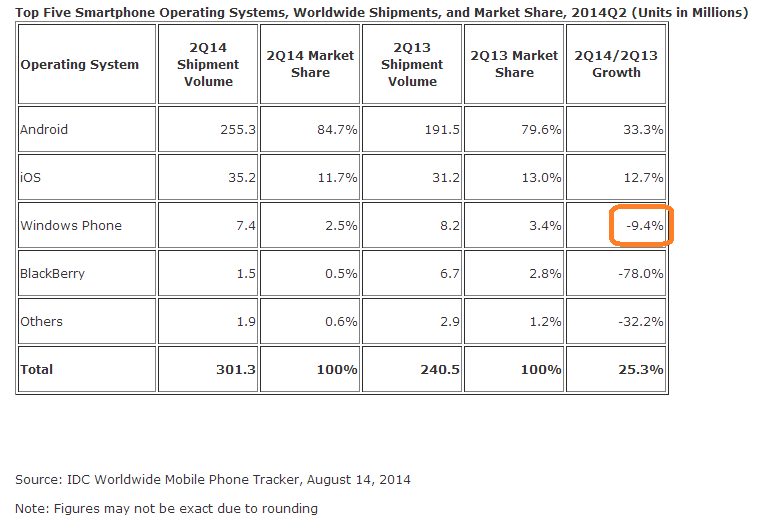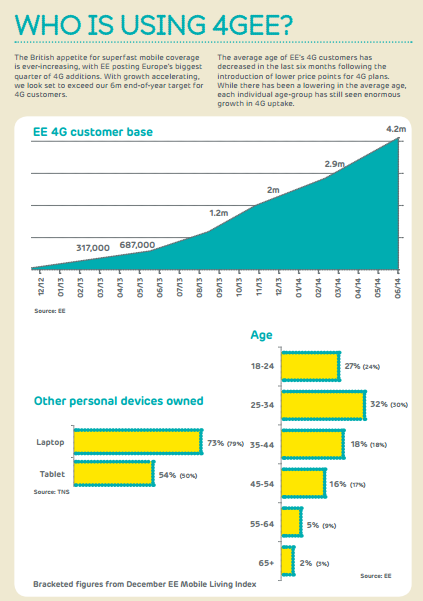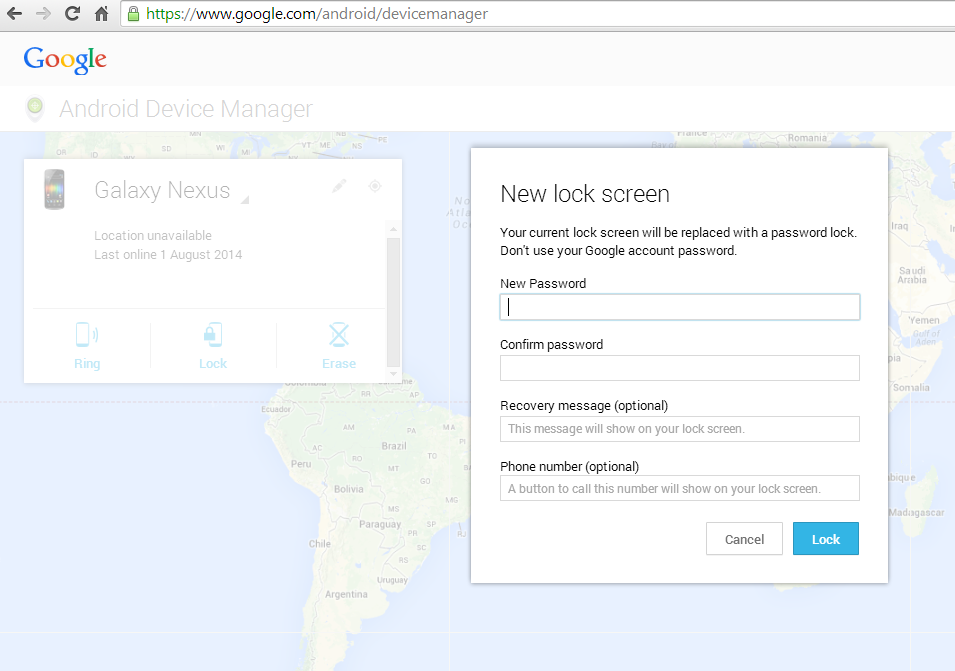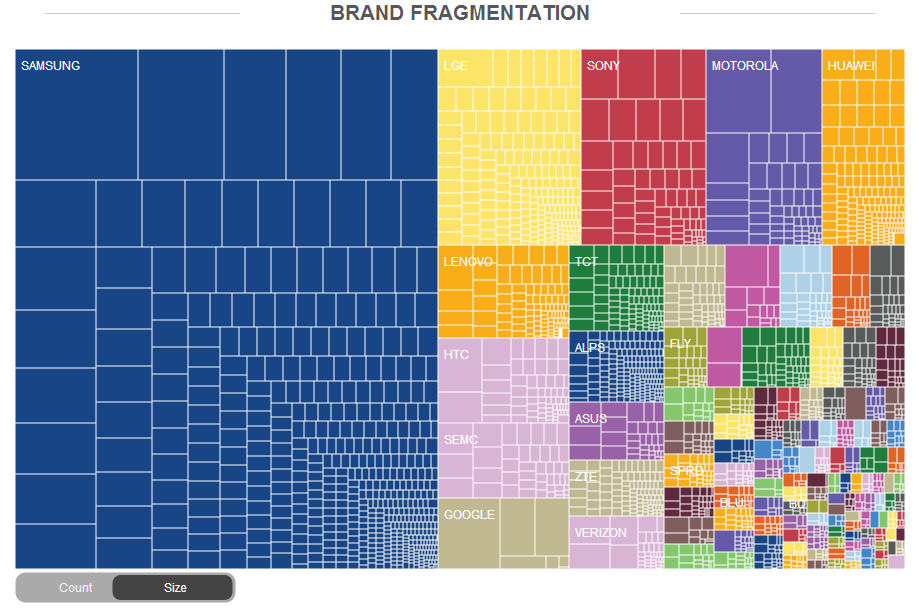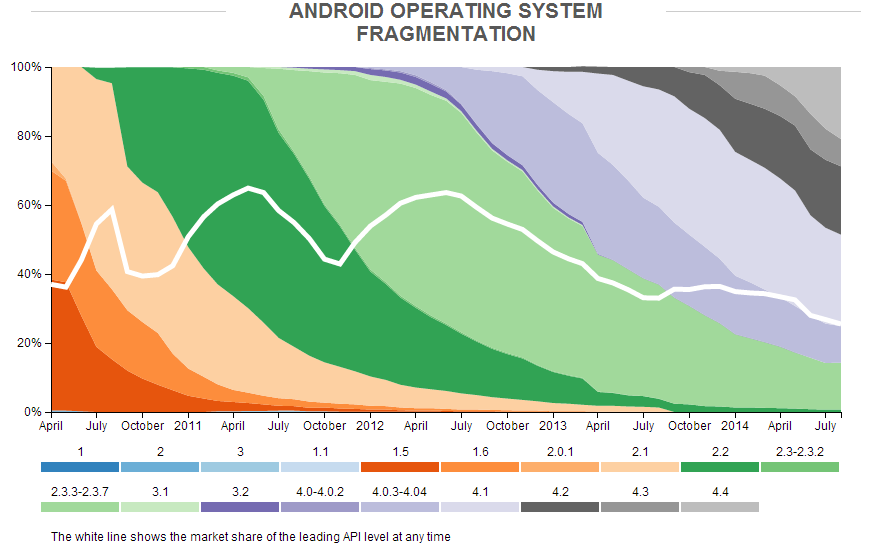Sections
Pick of the Week – Innovation and Risk
A key driver for the desire to see engineer costs decline in line with infrastructure costs is the hope that it is possible to eliminate or at least significantly reduce the scope for financial failure in new product or business innovation while preserving the potential upside. Low tolerance of failure has consequences for both individuals and more widely innovation in society as highlighted in a timely reminder of a 1995 book on the subject by John Gardner:
“We pay a heavy price for our fear of failure. It is a powerful obstacle to growth. It assures the progressive narrowing of the personality and prevents exploration and experimentation. There is no learning without some difficulty and fumbling. If you want to keep on learning, you must keep on risking failure — all your life. It’s as simple as that.”
Gardner is particularly drawn to the corrosive effect of accumulated failure on adults and the corresponding message they transmit to the young:
“By adolescence the willingness of young people to risk failure has diminished greatly. And all too often parents push them further along that road by instilling fear, by punishing failure or by making success seem too precious. By middle age most of us carry in our heads a tremendous catalogue of things we have no intention of trying again because we tried them once and failed — or tried them once and did less well than our self-esteem demanded.”
The consequences are often self-fulfilling:

Smartphones/OEMs
- IDC’s Q2 2014 mobile report which was referred to here last week to highlight iOS capture of the high end smartphone space also suggests Windows Phone has started losing ground in Q2 2014 in absolute and relative terms against both Android and iOS. Those platforms now collectively account for 96% of global smartphone shipments. The Verge sees it as a ‘blow’ for Microsoft with potentially more bad news to come when Google launches Android One in the key Windows Phone battleground market of India.
- There was some good news for the platform in the shape of the rumoured HTC One M8 running Windows Phone which turned out to be true after all – same hardware, two different operating systems:

- EE have published a fascinating survey of 4G usage across the UK based on polling 1000 customers. The survey shows a healthy growth in 4G subscriber base in the UK centred around 25-34 age group:
- EE track WiFi enablement and by doing so are able to monitor how 4G is eating slow WiFi and broadband. In terms of how customers are using 4G, EE’s data shows “4G is encouraging more data-intensive sessions on social media, with more pictures, more video and more downloading”. The same dynamic is also highlighted in a recent GigaOM assessment of VoLTE prospects which they see as limited until VoLTE enables more than mere VOIP use cases alone: “The real promise of VoLTE isn’t voice, but rather the raft of IP services that can be attached to those voice calls. By moving to an all IP network and service delivery platform, voice just becomes another feature in a wide-ranging communication service, all of which can be linked to a universal ID: your ten-digit phone number.”
- One development that might propel VoLTE into the mainstream would be its inclusion in iPhone6 and there are some tantalising signs emerging that it might arrive on iPhone6 in Q4: “if Apple finds and hires the right expertise, the iPhone 6 could be one software update away from sending voice over LTE data networks.“
Google/Android/Apps
- Google Now’s latest update incorporates Google’s Field Trip feature which will allow users to get detailed information on nearby discoveries including interesting landmarks and hot restaurants: “No longer is Google Now simply providing information you already know in a handy way — now it’s providing information you didn’t even know you wanted.” As Google Now accretes ever more useful features, it’s increasingly becoming a real and present threat for traditional media companies and their apps that are struggle to be “as useful as possible, in as many different ways as possible”. GigaOM suggest that media companies face a pretty bleak future if they don’t figure out a way to stay relevant by diversifying past just plain old news delivery: “the most a traditional media entity could hope for is that Google decides their updates are worth including in a Google News-style roundup delivered via Now”.
- Google’s Android Device Manager now includes options to add a custom homescreen message and callback number. You can set this data via the web interface with the idea being that should you lose your Android device, you can try and reach out to whoever finds it in the hope they are a kindly soul:
- Open Signal have published an update of their Android Fragmentation research revealing they have identified over 18k distinct Android devices in 2014 to date, a 50% increase on 2013. The picture they present is of an ever fractured Android brand landscape with Samsung accounting for 43% of device volume and a whole host of other OEMs competing for the rest. OpenSignal also update their famous “Android churn” graphic illustrating how the cadence by which progressive versions of Android wash over their predecessors. The report is essential reading for anyone interested in Android ecosystem dynamics.
- Notwithstanding OpenSignal’s report, the CEO of Entropy, a UK-based app development house, believes growing Android device fragmentation is “no longer a significant problem” for developers essentially because Google Play Services serves to flatten all the device variation. Looking at Android platform distribution data provided by Google he estimates “over 93 percent of all Android users are running the latest version of Google Play Services” which leads to the telling observation that “Play Services is more important than OS installs when planning and designing an Android app”. The emergence of Google Play Services as Google’s “platform within a platform” is now widely understood but it’s still notable to encounter evidence of developers actively seeking to design apps around Google Android (as opposed to AOSP) APIs.
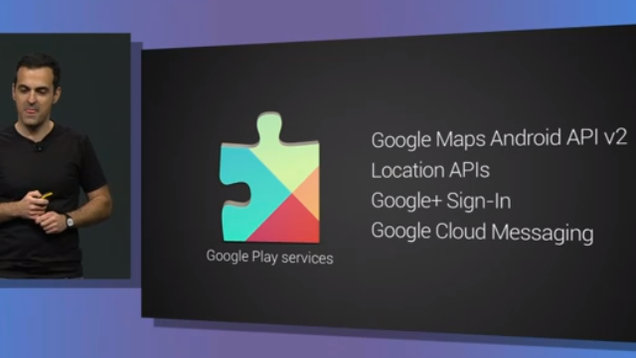
- According to a widely-reported Deloitte research study, “demand for smartphone apps in the UK has seemingly saturated and is on the verge of decline”. The figures are attributed to a growing proportion of older smartphone users, in particular “the research firm claims that the decrease in app download rate can be attributed to an increase in the number of smartphone owners over the age of 50, who seem to be less interested in downloading additional software stuff.” The trend represents more bad news for UK-based app developers many of whom will already be struggling below the app poverty line: “the average number of downloaded apps per month has fallen “significantly” in 2014 to just 1.82, from 2.32 reported in the same period last year. Almost nine in ten Brits admit they never opt to spend money on purchasing apps or other smartphone content, the report said.”
- App development is evolving into a winner takes all lottery akin to Hollywood so perhaps it’s apt that this week an app developed by a Hollywood star, Tom Hanks, has swept past the Deloitte research and shot to the top of the iOS app charts. Celebrity involvement doubtless has a lot to do with it – it’s one way of breaking the app discovery problem. The app itself, HanxWriter, is available as for free and presents the user with a retro typewriter keyboard complete with pseudo-analog sound effects intended to reflect Hanks’ appreciation of typewriter culture and history.

- Normal sounds like an interesting new iPhone utility for assessing what’s eating your battery life: “Unlike any other iPhone battery tracking app, Normal uses crowdsourced data from everyone using the app to provide personal advice on how to improve your battery. Once installed, Normal starts giving actionable suggestions like ‘kill Google to save 1 hour of battery life’ rather than just presenting you with stats.” Be warned though – at least one commentator suggests that the app may need to be improved to avoid implicating itself: “Using this app will dramatically reduce your battery life!”
Asia
- Engadget profile of Smartisan’s CEO Luo Yonghao, frequently referred to by commentators as the “Steve Jobs of China”, paints a picture of a charismatic if somewhat eccentric leader. The Jobsian launch of the T1 designed by Rob Brunner’s Ammunition Group was a triumph and Smartisan have exploited it fully to “have sold 26.11 million phones and thus generated a revenue of about $5.32 billion in the first half of this year”. The scale of their growth, however, has led to inevitable problems and apparently they are “having trouble keeping the supply chain and Foxconn’s production lines under control — [Luo] estimates it will be weeks before he reaches the desired 1,800-unit-per-day target. With the rumored 180,000 orders taken in total so far, it’s going to take Smartisan a very long time to meet the demand, let alone replace some of the faulty units from the first batch.”
- Apple have bowed to the inevitable and started storing Chinese user iCloud data in on state-controlled China Telecom servers ostensibly “to provide a better user experience as direct connection to the local server would allow faster and more stable access to iCloud services”. However it is the “China always requires Chinese banks and local telecom operators to store their user data in the country for the purpose of national security”. According to Apple, the stored data is encrypted so inaccessible to China Telecom.
Cloud/Infrastructure
- The economics around cloud as an alternative to hosted infrastructure are already compelling. GigaOM reported an IBM study that makes the case even more compelling by considering the full landed cost or TCIO (Total Cost of Infrastructure Ownership) incurred by hosting your own infrastructure in-house taking into account the additional resources and costs involved to support that decision which as highlighted in their slide below collectively add up to nearly 50% of the overall cost. The economic case for switching to cloud is overwhelming even for the most conservative of enterprise setups: “Just as people first thought automobiles were toys, early critics said the cloud would only be for limited use — test/development environments and spiky workloads. Now consensus is that the cloud can be used for almost all applications. Early cars were expensive and unreliable, but the evidence revealed a compelling reduction in TCIO that put the whole country on wheels. It may be the end of the road for the data center, but the economic forces shaping the cloud signal it’s the beginning of a better idea for the enterprise.”

Big Data/Machine Learning
- Anyone involved in data science will recognise the insights in this NYT article which highlights the hard, unglamourous process of data cleansing or “munging” that precedes the exciting business of insight generation: “Data scientists, according to interviews and expert estimates, spend from 50 percent to 80 percent of their time mired in this more mundane labor of collecting and preparing unruly digital data, before it can be explored for useful nuggets.”
- US artist Laurie Frick is interested in “data art” and has developed a new app called FRICKbits which “transforms your user data into art” and thereby “partially fulfills the idea of allowing users to reclaim their own data”. The data it consumes to generate this data art comes is scavenged from the phone and includes gathering motion sensor data from the iPhone5 M7 chip. Frick has set up a KickStarter for taking it further. Medium see the proposition as a “data selfie” generator with a twist: “FRICKbits, which runs natively on iOS, features an algorithm and pattern based on Frick’s own hand-drawn ink and watercolor pattern portraits. She said it’s a vector-based system that “mimics squiggly lines and the feel of something hand-crafted.”” Cue sample hand-drawn portrait:
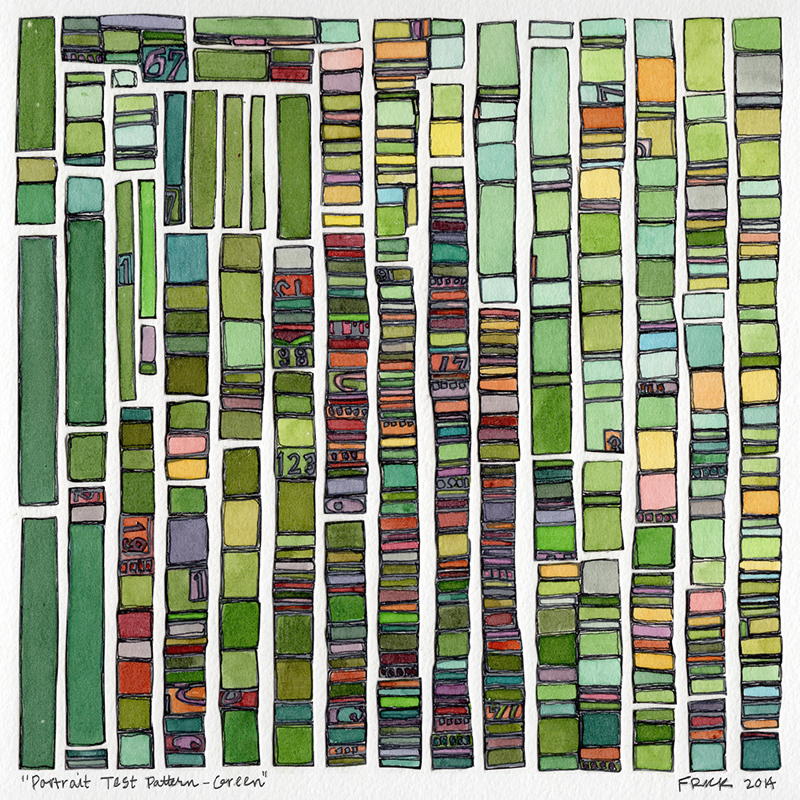
Services
- Ecommerce isn’t as profitable as some might think according to this HBR analysis which also suggests that multi-channel retailers might even have an advantage in pre-existing store estate provided they understand what it means to be digical: “retailers who fuse the best of digital and physical technologies [‘digical’] can capitalize on digital advantages both online and in stores”.
- App discovery Y-Combinator funded proposition ProductHunt have released an API. It’s limited access at the moment but it seems a few third party outfits have already used it to build utility apps and scripts. The service has gained a lot of traction within the alpha geek Silicon Valley circles unsurprisingly given: “Product Hunt is essentially a mashup of Reddit, Hacker News and a startup-focused newsletter. The service helps surface discussions about startups in the industry among notable industry investors, entrepreneurs, journalists and more.”
- The team that created Siri “are working on a new artificial intelligence system called Viv that they hope will be able to handle more complicated requests than Apple’s or Google’s smart assistants”. Steven Levy of Wired recently published a substantial profile of the Viv team and their grand ambition: “Viv strives to be the first consumer-friendly assistant that truly achieves that promise. It wants to be not only blindingly smart and infinitely flexible but omnipresent. Viv’s creators hope that some day soon it will be embedded in a plethora of Internet-connected everyday objects. Viv founders say you’ll access its artificial intelligence as a utility, the way you draw on electricity. Simply by speaking, you will connect to what they are calling “a global brain.” And that brain can help power a million different apps and devices.” The article includes an infographic attempting to explain how Viv processes language to extract meaning. It also throws in an predictable reference to Spike Jonze’s Her:

- Mike Loukides of O’Reilly reviewed the US government CIO playbook and found lots to admire: “It’s not ideal, and in many respects, its flaws reveal its origins. But it’s pretty good, and should certainly serve as a model, not just for the government, but for any organization, small or large, that is building an online presence.” At its core are thirteen principles (“plays”) for guiding modern services software development all entirely laudable:
- Understand what people need
- Address the whole experience, from start to finish
- Make it simple and intuitive
- Build the service using agile and iterative practices
- Structure budgets and contracts to support delivery
- Assign one leader and hold that person accountable
- Bring in experienced teams
- Choose a modern technology stack
- Deploy in a flexible hosting environment
- Automate testing and deployments
- Manage security and privacy through reusable processes
- Use data to drive decisions
- Default to open
Security
- Security experts at Black Hat USA 2014 drew attention to the enduring prevalence of hard coded admin passwords on sensor-based commercial devices and the security risk they pose as those devices become connected to the Internet of Things: “legacy credentials, especially on life-critical systems, pose serious problems going forward in the growing world of the Internet of Things. Recent examples cited by researchers include devices used in airport screening, satellite communications, medical practices, and industrial control systems.”
Wearables/InternetOfThings
- Jawbone recently collaborated with the WSJ to analyse aggregated user data sets across different cities in the world. They were able to build up a fascinating picture of collective behaviour and determine which cities get the most and least sleep with the most sleep-deprived being Tokyo and Seoul. The data for New York and San Francisco provides an absorbing snapshot of modern urban life and habits:

- On the subject of wearables, Nickel allergy affects between 10-20% of the population and some doctors in the US are increasingly concerned about its use in wearable devices and that “unlike Europe, the United States has no restrictions on its widespread use in consumer products”
- iBeacons will continue to gain traction with developments like this one which opens up the possibility of walking around with your own wearable beacon:
Estimote has shrunk its beacons down into sticker size: http://t.co/CvXLb51Z3c #mooreslaw
— Josh Lowensohn (@Josh) August 21, 2014
Programming
- Learntomod is a Minecraft mod that offers the potential to learn coding within the popular gaming environment. It hasn’t been released yet but looks worth keeping an eye out for.
- InfoQ published an interesting interview with an iOS developer working at Facebook in which he outlined how extensively functional programming based approaches underpin the native app they released in 2012 to replace their HTML5 proposition.
- Guido van Rossum recently outlined his proposal to add type annotation support to Python function declaration: “The proposal aims at bringing to Python the benefits provided by static typing without changing Python’s dynamic typing nature and interpreter behaviour.” It seems to be a logical step on from function annotations support already in Python 3 albeit a conservative one prioritising minimal change which has led to “concerns … about restricting function annotations to type signature specifications, and about the use of comments to convey type definitions.” This example of how it might work was provided by Guido in his proposal:
def word_count(input: List[str]) -> Dict[str, int]:
result = {} #type: Dict[str, int]
for line in input:
for word in line.split():
result[word] += result.get(word, 0)
return result
Work/Culture
- The Michael O. Church pick of the week article generated a lot of comment and Jon Evans at TechCrunch published a follow-up opinion piece in which he suggests that the real distinction is between companies that have a strong technical management cadre and those that don’t. Lack of respect for technical skills in Evans’ view is “an inevitable side effect of companies who boast completely non-technical managers. People who have never written code or soldered diodes, who don’t really understand what and how engineers do what we do, have no alternative but to have blind faith in us. Which, paradoxically, leads to less respect, because it’s the root cause of idiot-savant syndrome.” It’s worth reflecting on the dictionary definition of that term:
- Allowing a low respect/status engineering corporate culture to fester makes less and less business sense when you consider how increasingly every business is becoming a software business. He suggest you learn to read the warning signs: “Church is right, about some companies: those who don’t understand engineers don’t respect engineers. It might have made some sense to treat them as separate-but-slightly-inferior when technology was not at the heart of almost every business, but not any more. If you’re an engineer who’s treated as automatically lesser than an business graduate or MBA, or worst of all, treated as a cloistered savant, that’s a warning sign. Consider your future carefully if so.”
- Talking of environments where engineering skills may not necessarily always be respected, this is probably all too familiar to some:

- One place where you will certainly be respected as an engineer is Facebook. TNW offered up some reasons why you might want to consider turning down a job offer from them. It’s worth considering the stellar nature of the counterexamples they provide – the founders of YouTube and Instagram and the VP Engineering at Twitter. For most of us mere mortals, a job at Facebook is likely to end up opening more doors than it closes.
- It’s a given that the internet is changing society for better or arguably worse. In the former category, MOOCs (massively open online courses) are becoming increasingly important tools for learning and are particularly suited. In the latter, it is helping embolden and empower (if that’s the right word) practitioners of online incivility and providing the key enablers for a “gig economy” in which outfits like TaskRabbit and Favor offer unpredictable work snippets optimised to fit their business model giving rise to a new low status tier: “With piecemeal gigs easier to obtain than long-term employment, a new class of laborer, dependent on precarious work and wages, is emerging. In place of the “proletariat,” Guy Standing, a labor economist, calls them the “precariat.”“
- Social media is a key product of internet technology and culture. And most SMEs rightly take it as read that they need to engage and build it into the core of their Digital/CRM strategy often with a latent assumption that it will ‘inevitably’ lead to top line sales improvements. However, in the headlong rush to become Digital, it’s worth reflecting on this HBR article that points out that traditional sales approaches are still much more likely to yield actual sales than reliance on social media alone. The following stat from HBR should give pause for thought: “the average company with more than 1,000 employees already had more data in its CRM system than in the entire Library of Congress”.
